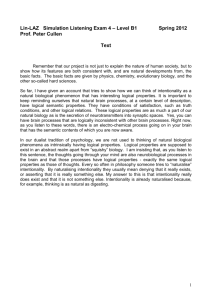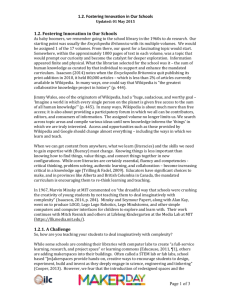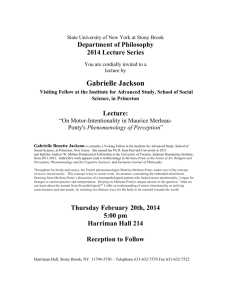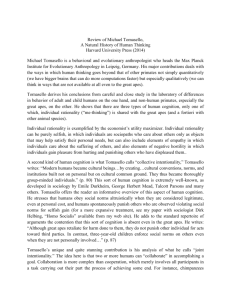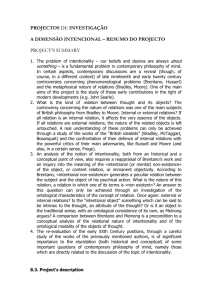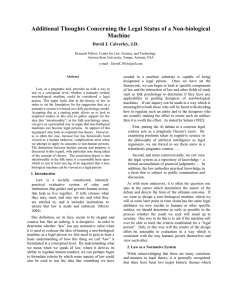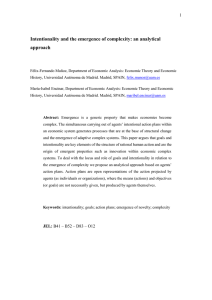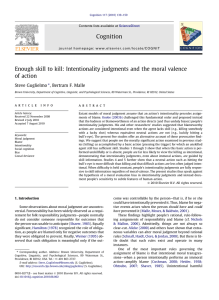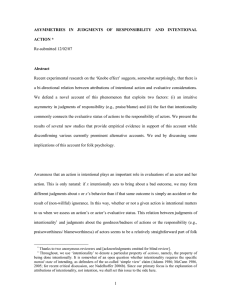Joint and collective intentionality (with questions)
advertisement
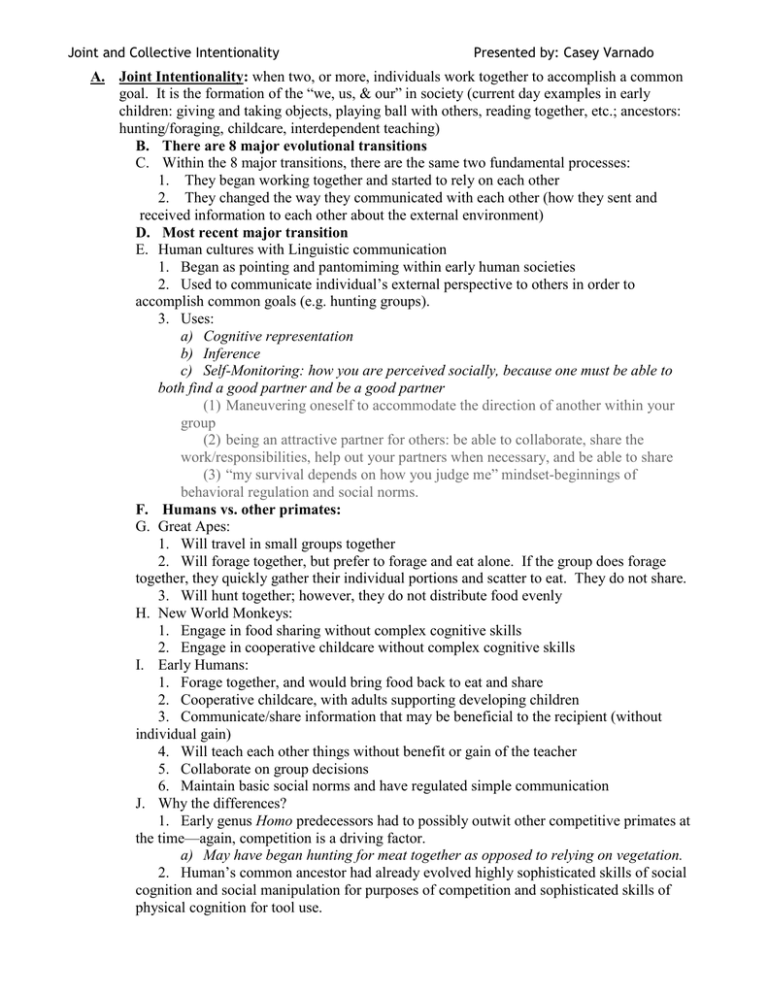
Joint and Collective Intentionality Presented by: Casey Varnado A. Joint Intentionality: when two, or more, individuals work together to accomplish a common goal. It is the formation of the “we, us, & our” in society (current day examples in early children: giving and taking objects, playing ball with others, reading together, etc.; ancestors: hunting/foraging, childcare, interdependent teaching) B. There are 8 major evolutional transitions C. Within the 8 major transitions, there are the same two fundamental processes: 1. They began working together and started to rely on each other 2. They changed the way they communicated with each other (how they sent and received information to each other about the external environment) D. Most recent major transition E. Human cultures with Linguistic communication 1. Began as pointing and pantomiming within early human societies 2. Used to communicate individual’s external perspective to others in order to accomplish common goals (e.g. hunting groups). 3. Uses: a) Cognitive representation b) Inference c) Self-Monitoring: how you are perceived socially, because one must be able to both find a good partner and be a good partner (1) Maneuvering oneself to accommodate the direction of another within your group (2) being an attractive partner for others: be able to collaborate, share the work/responsibilities, help out your partners when necessary, and be able to share (3) “my survival depends on how you judge me” mindset-beginnings of behavioral regulation and social norms. F. Humans vs. other primates: G. Great Apes: 1. Will travel in small groups together 2. Will forage together, but prefer to forage and eat alone. If the group does forage together, they quickly gather their individual portions and scatter to eat. They do not share. 3. Will hunt together; however, they do not distribute food evenly H. New World Monkeys: 1. Engage in food sharing without complex cognitive skills 2. Engage in cooperative childcare without complex cognitive skills I. Early Humans: 1. Forage together, and would bring food back to eat and share 2. Cooperative childcare, with adults supporting developing children 3. Communicate/share information that may be beneficial to the recipient (without individual gain) 4. Will teach each other things without benefit or gain of the teacher 5. Collaborate on group decisions 6. Maintain basic social norms and have regulated simple communication J. Why the differences? 1. Early genus Homo predecessors had to possibly outwit other competitive primates at the time—again, competition is a driving factor. a) May have began hunting for meat together as opposed to relying on vegetation. 2. Human’s common ancestor had already evolved highly sophisticated skills of social cognition and social manipulation for purposes of competition and sophisticated skills of physical cognition for tool use. Joint and Collective Intentionality Presented by: Casey Varnado a) All above were sophisticated processes of individual intentionality built for competition. b) Humans began to realize that they needed to rely on each other to accomplish larger goals, Individual intentionality faded to joint intentionality. c) As humans began to work together, they began weening out the bullies and parasitic individuals because they were able to deduce that using lazy or selfish people as a partner decreased their likelihood of acquiring food. This began social selectiveness. As populations grew, they needed more food to survive—more than what one individual could procure and bring home to their family—interdependence on others and hunting bands formed. II. Collective Intentionality: a modern, more complex form of joint-intentionality that involves larger groupings within a population, who follow structured cultural conventions, norms, and institutions. A. Modern Society has two dimensions: 1. synchronic (together) social organization—coordinating social interactions that define a society. 2. diachronic (through time)—transmission of skills and knowledge across generations (teaching and history “this is how we do things”, now and in the past) a) formed by observing others, imitation, conformation of behavior and norms of the group, and regulation/enforcement of conformity B. What is important about these two dimensions? 1. Now had a coordinative component—group members had to agree and be consistent 2. Now had a transmissive component—our agreed upon, consistent ways will be taught and followed to/by future generations a) This resulted in cultural practices—collectively known and followed social conventions, social norms, and institutions. (1) Communication—linguistic conventions; group members must coordinate/regulate language because it is agreed upon within the groups specific culture. (2) Language allowed modern humans to coordinate with anyone from the group. C. Updated societal components: 1. Group Identification: group members began identifying with individuals within their group culture and excommunicating nonconforming members and outsiders. 2. More extreme self-monitoring: you not only enforce yourself for nonconformity, but you begin to judge third parties. You monitor yourself and others and compare and contrast your behavior to your cultural social norms. 3. Development of Institutions: government systems, hierarchies, and systems for solving complex problems/regulating large groups. 5 Questions: 1. What are the differences between joint intentionality and collective intentionality? 2. How do apes and early humans differ in group activities? 3. Describe the diachronic dimension of collective intentionality. 4. Compare and contrast self-monitoring between joint and collective intentionality societies. 5. Describe the importance of institutions.
